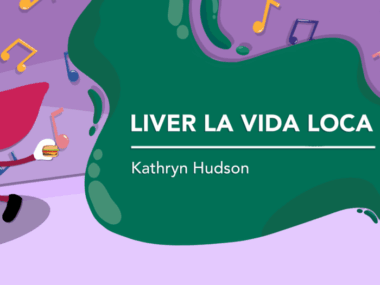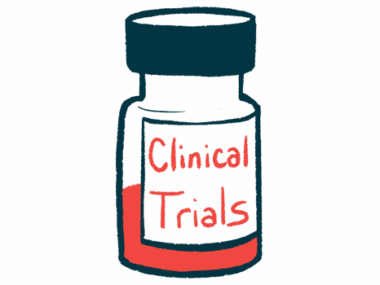Efruxifermin Phase 3 trials now enrolling fatty liver disease patients
Abnormal fat buildup tied to obesity, type 2 diabetes; leads to fibrosis
Written by |

Three Phase 3 clinical trials testing Akero Therapeutics‘ experimental injection therapy efruxifermin in adults with metabolic dysfunction-associated steatotic liver disease (MASLD) or metabolic dysfunction-associated steatohepatitis (MASH), two forms of fatty liver disease, are recruiting participants.
MASLD, which was formerly called nonalcoholic fatty liver disease, or NAFLD, is marked by the abnormal buildup of fat in the liver that’s associated with metabolic conditions, such as obesity or type 2 diabetes. Over time, it can progress to MASH, which is characterized by inflammation and fibrosis, or scarring, in the liver. This can lead to cirrhosis, or permanent liver scarring that may impair liver function and result in liver failure and the need for a transplant.
The first trial, called SYNCHRONY Real-World (NCT06161571), is enrolling up to 700 MASLD or MASH patients at more than 180 sites around the world. The second, SYNCHRONY Histology (NCT06215716), is recruiting up to 1,000 adults with MASH-related fibrosis, but no cirrhosis, at more than 200 sites worldwide.
The recently launched SYNCHRONY Outcomes (NCT06528314) study seeks to enroll up to 1,150 MASH patients with compensated cirrhosis, which is when the liver is still able to meet the body’s needs, at seven U.S. sites.
“The second quarter of 2024 brought important progress for [efruxifermin] with the initiation of the Phase 3 SYNCHRONY Outcomes trial and appointment of a chief technical officer,” Andrew Cheng, president and CEO of Akero, said in a company press release. “Initiation of the final planned trial in the Phase 3 SYNCHRONY program and expansion of our leadership team strengthen Akero’s position to advance our [efruxifermin] program, bringing us closer to providing this potentially transformative therapy to patients in need.”
Testing efruxifermin
Efruxifermin, administered once a week through an injection under the skin, is designed to reduce the buildup of fat in the liver by mimicking the activity of FGF21, a naturally occurring hormone that helps regulate metabolism and fat storage.
In June, Akero presented two-year data from a Phase 2b clinical trial called HARMONY (NCT04767529) that tested two doses of efruxifermin (28 and 50 mg/week) against a placebo in adults with MASH-related fibrosis.
Results showed 75% of patients given the higher dose and 46% of those on the lower dose saw reductions in fibrosis without worsening of MASH. By comparison, only 24% of those given a placebo achieved this goal. Very pronounced reductions in fibrosis were seen in about a third of patients given efruxifermin at either dose, compared with just 3% of those on placebo.
Among those who started off with more severe fibrosis, reductions in fibrosis severity were seen for 68% on the high dose and 40% on the low dose, compared with 14% for the placebo.
Comparisons against earlier timepoints suggested the amount of fibrosis resolution tended to increase in those who were on efruxifermin longer. The therapy was generally well tolerated, with the most common side effects being mild to moderate digestive upset.
An ongoing Phase 2b trial, dubbed SYMMETRY (NCT05039450), is testing the therapy against a placebo in about 200 adults with NASH-related compensated cirrhosis. Two-year results are expected early next year, according to Akero.
In the real-world study, participants will be randomly assigned to either 50 mg efruxifermin or a placebo for about a year. The main goals are evaluating the treatment’s safety and tolerability, with efficacy measures as secondary goals.
Those in the SYNCHRONY Histology study will be given 28 or 50 mg of efruxifermin, or a placebo, for about two years. The main goal is to evaluate how many participants have MASH resolution and a reduction in fibrosis severity after a year.
If the histology study results are positive, Akero plans to use the findings toward efruxifermin’s accelerated approval, which allows an experimental therapy to be marketed based on early biomarker evidence that it’s likely effective, with further trial data being needed to prove its effectiveness.
In the Outcomes trial, the participants are being randomly assigned to receive injections of 50 mg efruxifermin or a placebo for up to five years. The primary goals are to assess if the treatment delays clinical worsening in all patients and if it leads to a reduction in liver fibrosis in those with biopsy-proven cirrhosis.
In the SYNCHRONY Phase 3 program, the experimental therapy is being administered using the LyoJect 3S dual chamber syringe, a prefilled device designed to let patients self-administer the injection. If efruxifermin is approved, Akero expects it would be administered via this device.






